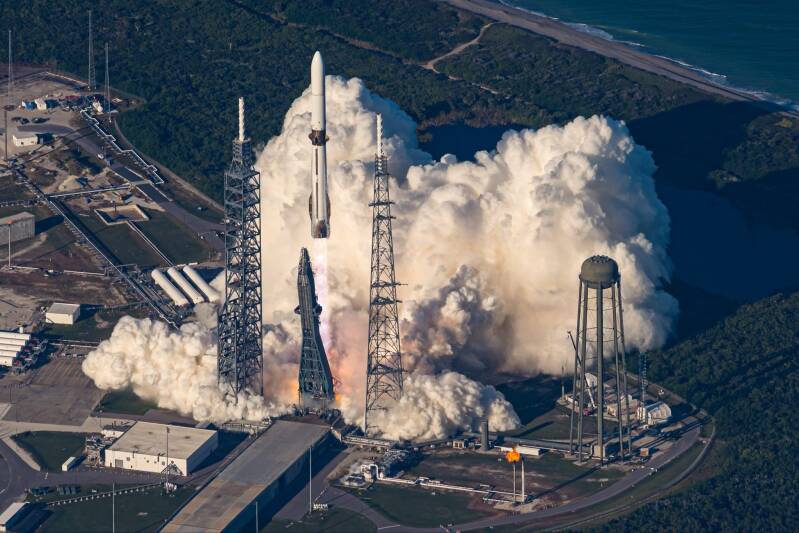Just one week after the triumphant launch and landing of its New Glenn booster—which successfully deployed NASA’s ESCAPADE mission on a trajectory to Mars—Blue Origin is already looking to the future. On November 20, the aerospace company announced a significant evolution of its launch vehicle family, including immediate performance boosts for its current rocket and plans for a massive new variant: the New Glenn 9x4.

Credit: Blue Origin
Immediate Power Boost for Next Launch
Starting with the very next mission (NG-3), scheduled for early next year, the current New Glenn vehicle—retroactively designated as the 7x2—will undergo substantial performance upgrades.
Blue Origin engineers plan to push the hardware harder, significantly increasing the thrust on both stages of the rocket:
First Stage: The seven BE-4 engines will see their combined thrust rise from 3.9 million to 4.5 million pounds-force.
Upper Stage: The two BE-3U engines will increase total thrust from 320,000 to 400,000 pounds-force.
Beyond raw power, the company is introducing a reusable payload fairing, a lighter and more cost-effective lower tank design, and a reusable thermal protection system for the booster. "These enhancements will immediately benefit customers already manifested on New Glenn to fly to destinations including low Earth orbit, the moon and beyond," the company stated.
Enter the "9x4" Heavy Lifter
The most striking part of the announcement is the introduction of the New Glenn 9x4. This larger, more powerful variant is designed to compete directly in the super-heavy-lift market.
The 9x4 variant will feature a taller profile and a wider 8.7-meter payload fairing (up from the current 7 meters). It will be powered by nine BE-4 engines on the first stage and four BE-3U engines on the second stage.
Projected Performance Comparison:
First Stage Propulsion: The current New Glenn (7x2) is powered by seven BE-4 engines, whereas the future 9x4 variant will be upgraded to utilize nine BE-4 engines.
Second Stage Propulsion: On the upper stage, the engine count will double from the current two BE-3U engines to four on the new version.
Fairing Size: The payload fairing will increase in size, expanding from the current 7-meter diameter to a wider 8.7 meters on the 9x4.
LEO Payload: In terms of lift capability to Low Earth Orbit (LEO), the current vehicle offers approximately 45 metric tons, while the 9x4 is projected to deliver more than 70 metric tons.
Deep Space Payload: For high-energy orbits, the current design targets about 13 metric tons to Geostationary Transfer Orbit (GTO), while the upgraded heavy lifter is designed to send over 20 metric tons specifically on a Translunar Injection (TLI) trajectory.
*Note: Current generation specs are estimates; Blue Origin has not confirmed if the new thrust upgrades alter the 45t baseline.
Blue Origin confirmed that both the 7x2 and 9x4 versions will operate concurrently. This dual-fleet strategy is intended to serve a variety of sectors, including megaconstellation deployment, deep space exploration, and national security initiatives such as "Golden Dome."
Ramping Up Production
While the announcement detailed technical specifications, Blue Origin leadership is focused on operational cadence.
In an interview following the successful NG-2 Mars launch, Blue Origin CEO Dave Limp emphasized the necessity of scaling manufacturing. He avoided discussing specific performance upgrades, focusing instead on the company's goal to produce over 20 expendable second stages annually.
"We want to be very hardware rich next year," Limp said. "The question is, can we just get to an operational cadence? And to me, that’s the next step that we’re going to have to sit down with the teams about."
While no specific timeline was given for the debut of the 9x4 variant, Limp expressed confidence in the immediate future, promising to launch "a bunch of times" in the coming year.


Add comment
Comments